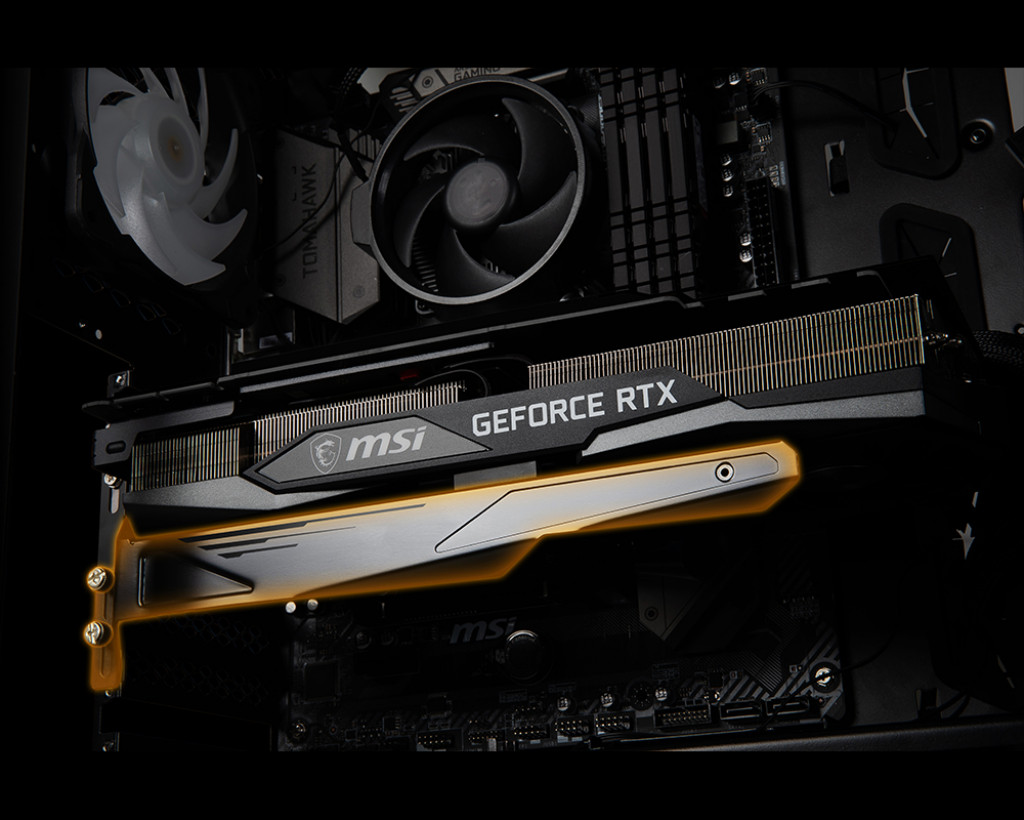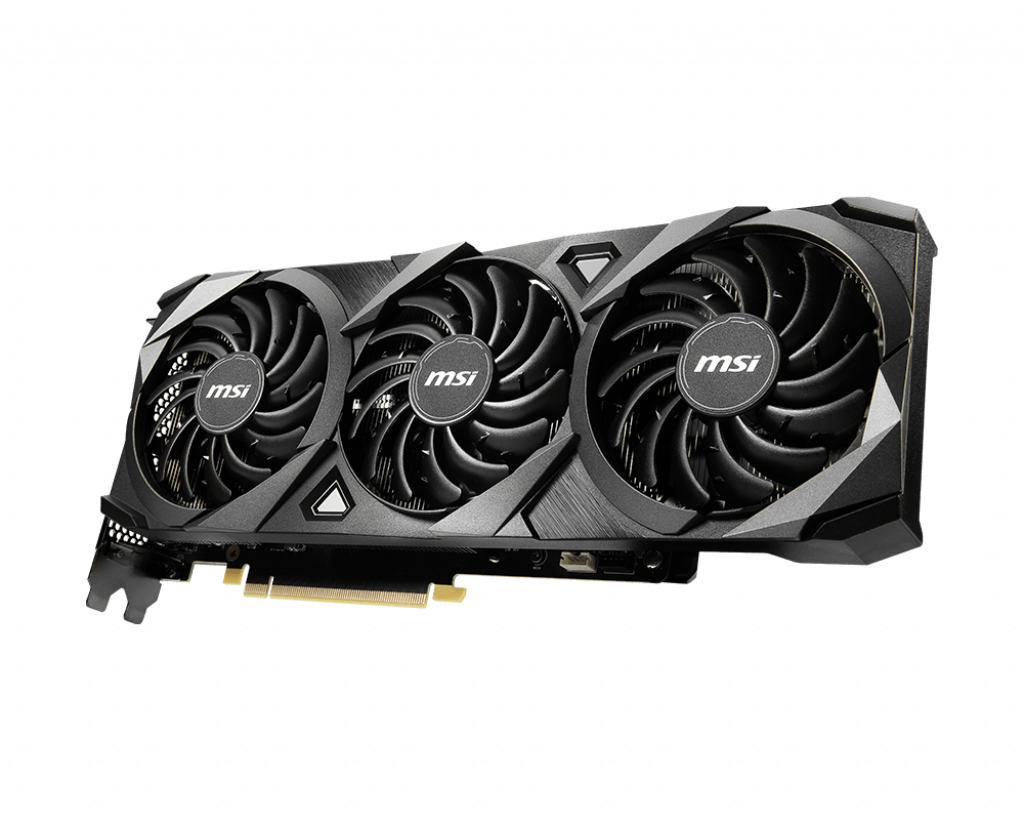MSI Reveals Clock Speed, Photos For RGB, Triple-fan RTX 3070 Card
Being a step below the 3080 doesn't keep MSI's upcoming RTX 3070 Gaming Trio from being chunky.
Last week, MSI updated the specs and photos gallery on the pages for one of its Nvidia GeForce RTX 3070 models, giving us a better idea of its size and performance as we head towards the RTX 3070’s October 29th launch date.

The MSI GeForce RTX 3070 Gaming Trio is one of the larger RTX cards we’ve seen yet, measuring 12.7 inches in length and taking up three slots. It does come with an included support bracket to help hold up its weight, but still, this 3.1-pound card is a beast physically. That’s probably due to its three cooling fans, which help it hit its newly announced clock speeds.
According to MSI, the RTX 3070 Gaming Trio has a base clock of 1500 MHz and a boost clock of 1770 MHz, plus an 8GB GDDR6 memory capacity with a 14 Gbps memory speed. By comparison, Nvidia’s RTX 3070 Founders Edition has a boost clock of 1730MHz.
MSI fans will also be pleased to know that the whole card is also decked out with customizable RGB, and that the company’s dragon logo is front and center in the middle of each of the card’s fans.
MSI also has two other RTX 3070 cards listed on its site, though it hasn’t posted the clock speed for either. These are the GeForce RTX 3070 Ventus 2X OC and the GeForce RTX 3070 Ventus 3X.

The Ventus 2X is a simpler card that lacks RGB and only has two fans, which means that it’s only 9.1 inches long. Like it’s larger cousins, it also has 8GB of GDDR6 memory running at 14 Gbps.

The Ventus 3X, meanwhile, is similar to the Ventus 2X but adds on another fan. It’s 12 inches long and also has 8GB of GDDR6 memory.
For more info on RTX cards as they get announced, check out our guide on where and how to buy RTX 3000 series cards.
Get Tom's Hardware's best news and in-depth reviews, straight to your inbox.
Michelle Ehrhardt is an editor at Tom's Hardware. She's been following tech since her family got a Gateway running Windows 95, and is now on her third custom-built system. Her work has been published in publications like Paste, The Atlantic, and Kill Screen, just to name a few. She also holds a master's degree in game design from NYU.
